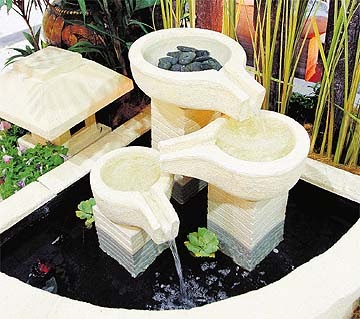
10 Tips for Determining Where to Put Your Pump in a Koi Pond
Introduction
Koi ponds are beautiful and serene water features that can delight and relax anyone who sees them. However, to keep the water clean and healthy for fish and aquatic plants, you need a reliable pond pump. In this article, we will provide you with 10 valuable tips for determining the best location for your pond pump.
1. Consider the Water Flow
Before installing a pond pump, you need to think about water flow. You must determine the desired flow rate of your pump and the amount of water that your pond can handle. Your pump’s capacity should also be able to handle the height and length of your water feature.
2. Consider the Pond’s Depth
The depth of your pond is another factor that you must consider before installing the pump. The pump should be installed at the deepest point of the pond since this is where the dirt, debris, and other contaminants settle.
3. Think About the Distance Between Pond and Pump
The distance between your pond and the pump is essential as it affects the efficiency of the system. The shorter the distance, the better, as this reduces the amount of energy required to pump the water.
4. Look Out for Potential Electrical Hazards
Your pond pump requires electricity to operate, so you should be mindful of potential electrical hazards. It is recommended that you use a licensed electrician to avoid any electrical accidents.
5. Protect Your Pump from Debris
Protecting your pump from debris is essential, as it will prolong its lifespan. Place the pump in a filter box or skimmer, which will keep it safe from leaves and debris.
6. Follow Manufacturer’s Guidelines
Another crucial tip for installing a pond pump is to follow the manufacturer’s guidelines. Installation instructions differ from one pump to another. Therefore, you need to confirm the specifications and guidelines before installing the pump.

7. Determine the Pump’s Power Source
For pond pumps to function correctly, you will need a reliable power source. For example, solar-powered pumps are great if your pond is in a sunny position. If your pond is not in a sunny location, you should go for an electric-powered pump that is reliable and provides consistent power supply.
8. Find a Suitable Timer
A timer is an essential component of a pond pump that helps regulate water flow. It’s critical to find a suitable timer that is compatible with your pump and can handle the desired flow rate.
9. Determine the Correct Pipe Diameter
Choosing the correct pipe diameter is essential when installing a pond pump as this can impact flow rate and energy efficiency. Consult with experts in pond filtration to choose the right size and type of pipe that is compatible with your pump.
10. Install Your Pump in a Sheltered Area
To protect your pump from the elements, it’s essential to install it in a sheltered area away from direct sunlight and extreme weather conditions. You could use a pump cover to protect the pump from rain, sun, or snow.

Conclusion
Choosing the right location for your pond pump is critical if you want your water feature to remain clean, clear and sustainable. When you follow these ten tips, you will find the perfect location to place your pump. Remember to keep your pump safe from debris and weather conditions to keep it functioning correctly.